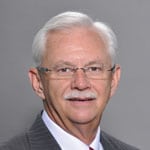The Department of Labor’s Office of Labor-Management Standards (OLMS) reports the following criminal actions involving officers of various locals, divisions and general committees within the BLET, BMWE, BRS and UTU since Jan. 1, 2011:
* On July 13, 2011, in the United States District Court for New Jersey, Jose Rivera, former president/secretary-treasurer of United Transportation Union Local 710, a union representing Coach bus drivers in Orange, Newark, and Elizabeth, N.J., pled guilty to an information to taking unauthorized loans in excess of $2,000, in violation of 29 U.S.C. 503(a) and (c). Rivera’s sentencing is scheduled for October 2011. The guilty plea follows an investigation by the OLMS New York District Office.
* On July 12, 2011, in the United States District Court for the Southern District of West Virginia, Derrick George, the former secretary-treasurer of Brotherhood of Maintenance of Way Employes Division Sub-Lodge 76 (Leon, W.Va.), was charged in a one-count indictment for embezzling $19,287.42 in union funds. The charge follows an investigation by the OLMS Pittsburgh District Office and the Department of Labor’s Office of Inspector General.
* On July 11, 2011, in the United States District Court for the Middle District of Pennsylvania, Brandon S. Borders, former secretary-treasurer of United Transportation Union Local 997 (Camp Hill, Pa.), was indicted on one count of embezzlement of union funds in the amount of $12,551.16, in violation of 29 U.S.C. 501(c). The charge follows an investigation by the OLMS Philadelphia District Office.
* On June 15, 2011, in the State of Iowa, Cerro Gordo County District Court, Ken Schmidt, former secretary-treasurer of Brotherhood of Locomotive Engineers and Trainmen Division 656 (Mason City, Iowa), was charged with theft in the 2nd degree in the amount of $9,467, in violation of Iowa Statutory Code 714.21. The charge follows an investigation by the OLMS St. Louis District Office.
* On June 13, 2011, in the United States District Court for the Eastern District of Pennsylvania, Amar Ali, former secretary-treasurer of Brotherhood of Maintenance of Way Employes Sub-Lodge 695 (Baltimore, Md.), was sentenced to two years of probation. Ali was also ordered to pay a $25 special assessment fee and a $500 fine. Ali previously made restitution in the amount of $1,986.29. On Jan. 4, 2011, Ali pled guilty to a one-count information for failure to maintain union records, in violation of 29 U.S.C. 439(a)(b). The sentencing follows an investigation by the OLMS Philadelphia District Office.
* On May 19, 2011, in the United States District Court for the Central District of Illinois, Tyson Pedigo, former general secretary-treasurer of Railroad Signalmen General Committee 12 (Meridian, Texas), pled guilty to a charge of falsifying union records, in violation of 29 U.S.C. 439(c). The guilty plea follows an investigation by the OLMS Chicago District Office.
* On April 15, 2011, in the Western District of Arkansas, an information was filed against Michael Curry, former secretary-treasurer of Brotherhood of Maintenance of Way Employees Lodge 1127 (Texarkana, Ark.), charging him with knowingly and willfully embezzling funds belonging to Lodge 1127 in the amount of $6,996.55, in violation of 29 U.S.C. 501(c). Curry pled guilty to the charge. The charge and plea follow an investigation by the OLMS Dallas District Office.
* On April 12, 2011, in the United States District Court for the Western District of Missouri, an information was filed against Charles E. McDaniel, former general chairman of the United Transportation Union General Committee of Adjustment 341, charging him with one count of wire fraud for fraudulently obtaining $44,889.62 from UTU and $36,629.29 from BNSF, in violation of 18 U.S.C. Section 1343. The charge follows an investigation by the St. Louis District Office.
* On April 7, 2011, in the United States District Court for the Northern District of Indiana, Hammond Division, Robert K. Lauermann, former secretary-treasurer of Brotherhood of Locomotive Engineers and Trainmen Division 682 (Whiting, Ind.), was indicted on one count of embezzlement of union funds over $10,000, in violation of 29 U.S.C. 501(c). The charge follows an investigation by the OLMS Chicago District Office.
* On Feb. 11, 2011, in the United States District Court for the Northern District of Illinois, Frank Kmiec, former secretary-treasurer of Brotherhood of Maintenance of Way Employees Division Local 2857 (Genoa City, Wis.), was sentenced to one year probation with the first six months served in home confinement with electronic monitoring. He was also ordered to pay a special assessment of $25. On Nov. 22, 2010, Kmiec pled guilty to making false entries in the local’s cash record book, check register, and quarterly audit reports thereby misrepresenting the balance of the local’s bank account. In pleading guilty, Kmiec admitted to embezzling approximately $19,461.39 in Local 2857 funds. The sentencing follows an investigation by the OLMS Chicago District Office.
* On Feb. 4, 2011, in the United States District Court for the Central District of Illinois, Kevin T. Hunt, former secretary-treasurer for United Transportation Union Local 198 (located in Peoria, Ill.), was sentenced to one year probation. He was also ordered to pay a fine of $500 and a $25 special assessment. On Oct. 26, 2010, Hunt pled guilty to a one-count information for filing a false LM report. The sentencing follows an investigation by the OLMS Chicago District Office.
Definitions:
An indictment is a formal accusation or charge based on a finding by a grand jury that it is likely that the person charged committed the criminal offense described in the indictment and is the means by which an accused person (defendant) is brought to trial. An indictment raises no inference of guilt. As in all criminal cases, each defendant is presumed innocent until proven guilty beyond a reasonable doubt.
An information is a formal accusation of a crime by a government attorney rather than a grand jury. An information raises no inference of guilt. As in all criminal cases, each defendant is presumed innocent until proven guilty beyond a reasonable doubt.
A charge is an accusation of criminal activity and raises no inference of guilt. As in all criminal cases, each defendant is presumed innocent until proven guilty beyond a reasonable doubt.
A guilty plea is a defendant’s admission to the court that he or she committed the offense charged and an agreement to waive the right to a trial.
A conviction is a judgment based on a jury’s verdict, judge’s finding, or the defendant’s admission that the defendant is guilty of the crime charged.
A sentence is a judicial determination of the punishment to be imposed on an individual who has plead guilty or has been convicted by a jury or judge of a criminal offense.
 HOLLYWOOD, Fla. – Mike Futhey was elected to his second four-year term as president of the United Transportation Union Aug. 8 during the UTU’s 11th quadrennial convention here.
HOLLYWOOD, Fla. – Mike Futhey was elected to his second four-year term as president of the United Transportation Union Aug. 8 during the UTU’s 11th quadrennial convention here.


